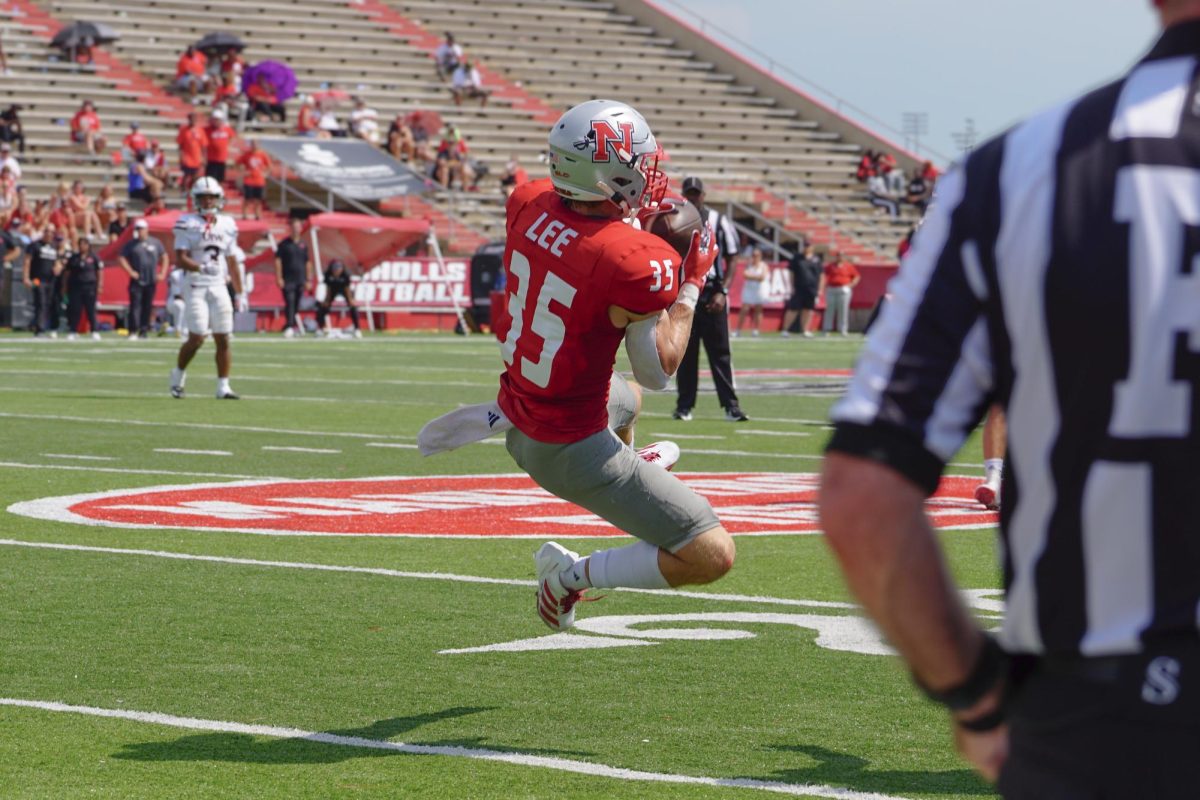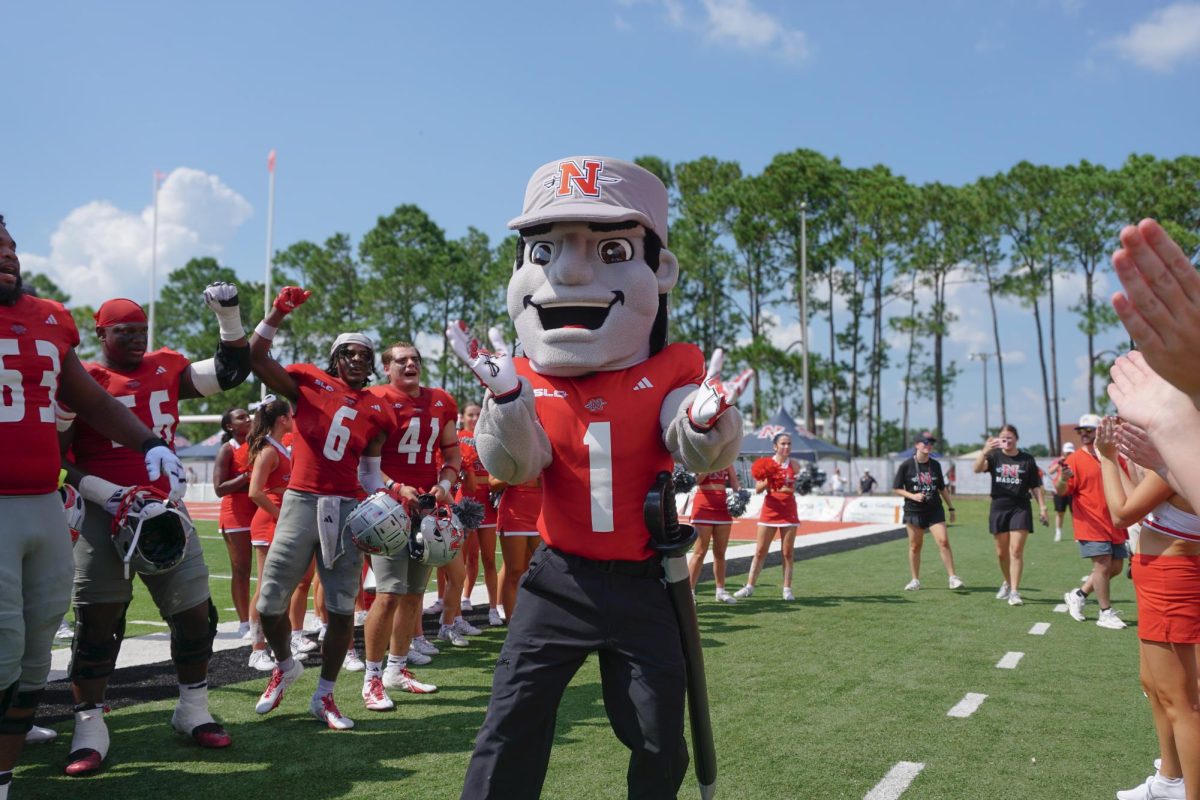Professional football viewing in fall 2007 – which none of you should be undertaking because you should be studying – has reached new levels of frustration. There are the New England Patriots who, in the true American tradition of their mascot, are destroying all competition, as if to tell Commissioner Bud Selig “in spite getting caught stealing other teams’ signals, we will destroy all competition” – a vindictive response to the team’s recent lawbreaking that is also true to the contemporary red-white-and-blue tradition.
Then there’s the New York Giants, whose quarterback can only seem to muster three touchdown passes per game and who will never appear as the host of Saturday Night Live, unlike the Indianapolis Colts, whose quarterback can pass for three touchdowns in a single quarter and whose episode of SNL has already been re-run twice.
And of course, there’s the preseason Super Bowl favorite New Orleans Saints, whose first-string employs the 2006 NFL leaders in passing, receiving, and all-purpose yards – lest we forget.
I’ve decided that it’s best for the coronary health of my back porch cats, whom I apparently startle several times during NFL broadcasts, to vent my frustration by developing truer measures of football competence.
Here, then, are five new statistics for the NFL statisticians and television networks to consider.
(1) Yards per Dollar (YP$). Running backs are often assessed by how many yards they carry the football beyond scrimmage with the statistic, “Yards per Carry.” But Sunday’s Saints game posed a dilemma: How do you compare multimillionaire and 2006 Heisman Trophy Winner and first-round draft pick Reggie Bush with first year, free agent Pierre Thomas, both of whom ran for about 70 yards in the game against the Falcons? One way is to use my new statistic, “YP$.” At minimum league salary, Thomas ran for 0.000198 YP$, whereas Bush ran for 0.00000143 YP$, demonstrating that on Sunday free agent Thomas is two orders of magnitude more cost-effective than bling-dangling Bush.
(2) Dollars per yard ($PY). It’s fairly obvious that NFL owners have difficulty interpreting numbers, especially those with many digits on that side of the zero with which they’re not so accustomed. The reciprocal of YP$ is “$PY.” Extending the above argument, Reggie Bush cost Saints Owner Tom Benson $700,000 per yard last Sunday, whereas Pierre Thomas cost only $5057. These numbers, of course, do not include income derived from outside the team, like Bush’s endorsement from the Subway sandwich chain and Thomas’s recent contract to promote the products of a Harahan potted meat canner.
(3) Sacks per Pound (SPP). Speaking of meat, a heavy lineman is an NFL quarterback’s (and team owner’s) best friend. With agile legs or just simply massive and wide, part of an offensive lineman’s job is to protect the quarterback following the snap by blocking one or more members of the defensive line, who are all rushing to render the quarterback potted. These hard-working bubba burgers are often maligned with the statistic “Quarterback Sacks Allowed,” which represents not just their mass and agility, but also the agility, vision and Saturday night drinking practices of the man they intend to protect.
I propose “SPP” to compare the productivity (and protect the egos) of those relatively lean offensive lines that occasionally allow quarterback sacks from those that allow sacks while they’re not preparing for the Michelin Tire mascot auditions.
(4) Yards of Lateral Rushing (YLR). Light, fleet-footed running backs like Reggie Bush are sometimes directed to “run outside” rather than through the defensive line. In theory, their winged ankles should swiftly carry them beyond the line of scrimmage before any defensive lineman can catch up with them. To accomplish this, they must do a lot of running toward the sideline before they redirect upfield and run toward the goal line, but only the upfield running gets counted in their rushing statistics. I propose YLR to accommodate their hard work, as well as to give Reggie Bush his first rushing title of the season.
(5) E.D. Commercials per Quarter (EDPQ). If the NFL wants televised football to be a family affair, then perhaps the number of Cialis commercials during game broadcasts should be limited. Everyone gets the idea by now, including our children and our young brothers and sisters who, ironically, are denied sex education in schools. I doubt that one minute question and answer sessions between press box scenes of John Madden provide the best education or the best marketing. Networks and television guides should add EDPQ disclaimers, if for no other reason than to keep Nielsen raters in the living room watching the game.
I hope that the pro-football powers will consider these new statistics. As a group, they will likely improve the coronary health of your pet cats during broadcast hours. And at least four of these statistics are likely to do the same for humans.









